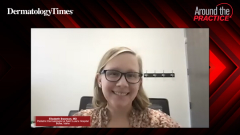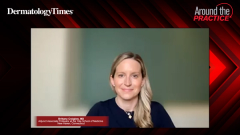
Case 2 Continued: Impressions and Recommendations
Vikash Oza, MD, provides clinical insight for Case 2, a 7-year-old female patient with atopic dermatitis.
Episodes in this series

Joshua Zeichner, MD: Let’s open this up to the group. Based on the patient’s age, the location of the rash, and the challenges associated with her treatment plan, what do you guys recommend?
Vikash Oza, MD: One thing in this case is the significant involvement of facial dermatitis. For people who see adults, maybe that’s something we see a lot. But in a 7-year-old who has such significant facial involvement and then only limited involvement on the extremities, it isn’t the most common prototype of a patient you’d see. That would make me wonder whether a contactant could be involved here. This has become increasingly common, even in our field of pediatric dermatology.
Before prescribing systemic agents, should we be evaluating and ruling out allergic contact dermatitis? There are certain scenarios—persistent hand dermatitis, unusual facial dermatitis—where maybe the first step is to take a step back and say: “Is there a contactant in your skin care products?” There’s a lot of exposure for children who are chronically using multiple skin care products. Then there is an increasing use of “organic” skin care products and essential oils. The number of different contactants that they’re exposed to has also increased. That might be my first step. Is what you’re looking at a pure flare of their underlying atopic dermatitis? Or is there a component of allergic contact dermatitis involved in their presentation? It’s important to take that step back when you’re seeing children who have less prototypical involvements.
Joshua Zeichner, MD: That’s such a good point, because if there’s an allergic contact dermatitis component, then putting them on a biologic medication for atopic dermatitis isn’t necessarily going to be an effective treatment, because you’re constantly exposed to that allergic contact allergen.
Vikash Oza, MD: Potentially. It also sometimes depends on the contactant. But I totally agree. When you have a suspicion, it might be something that you want to rule out.
Transcript edited for clarity
Newsletter
Like what you’re reading? Subscribe to Dermatology Times for weekly updates on therapies, innovations, and real-world practice tips.























